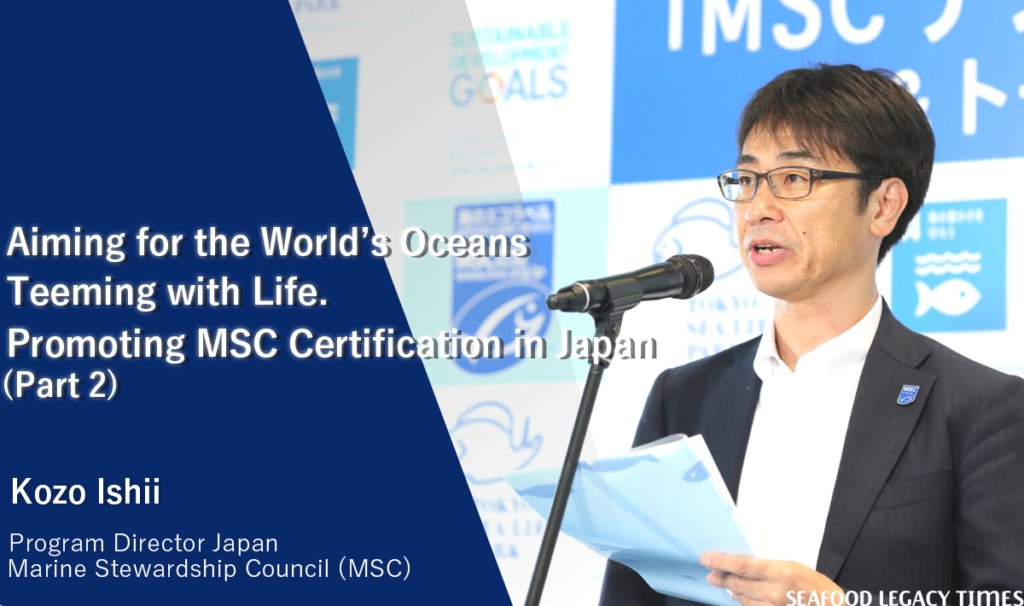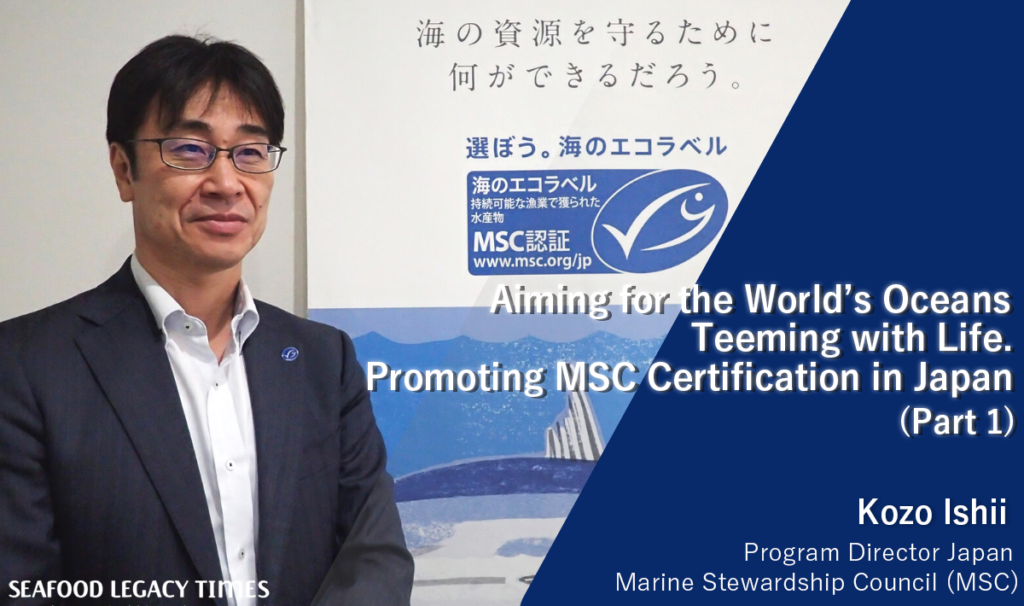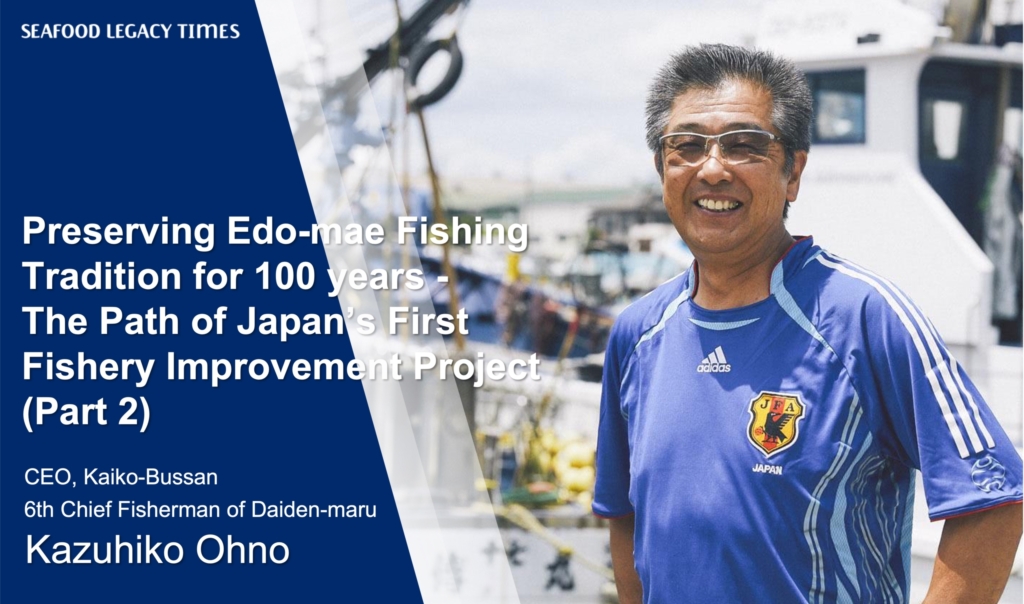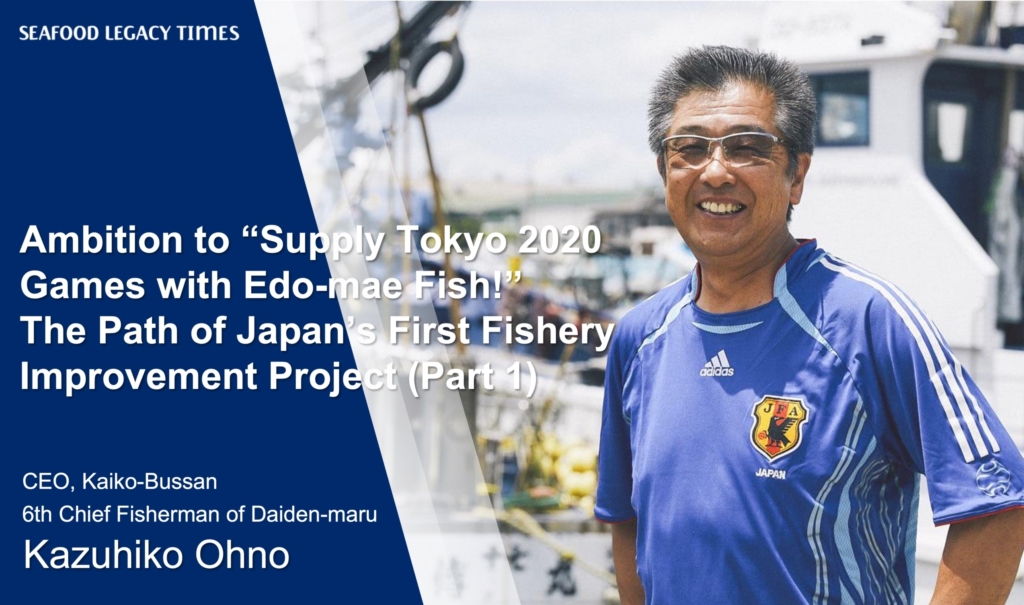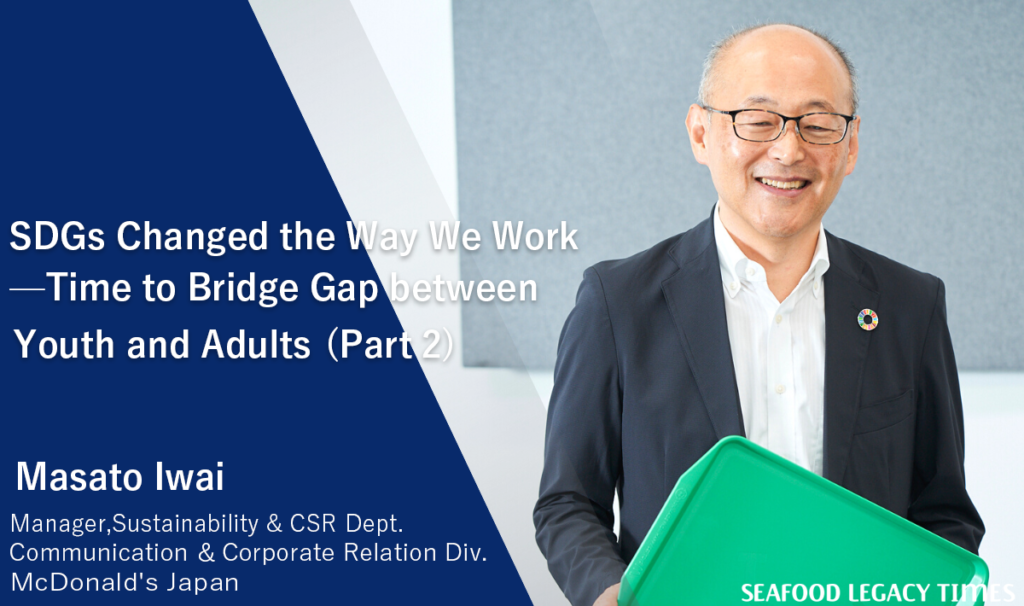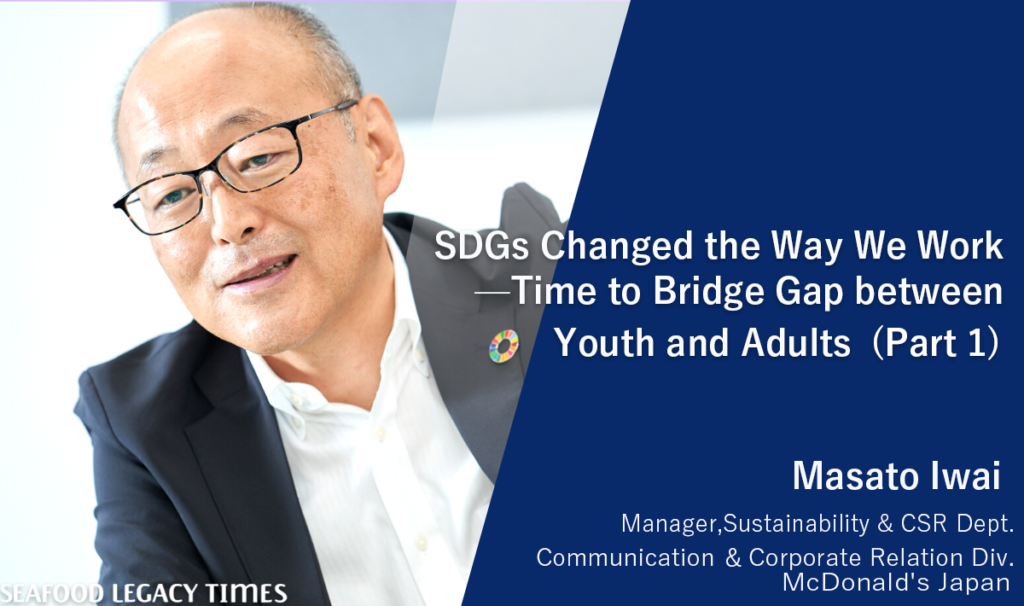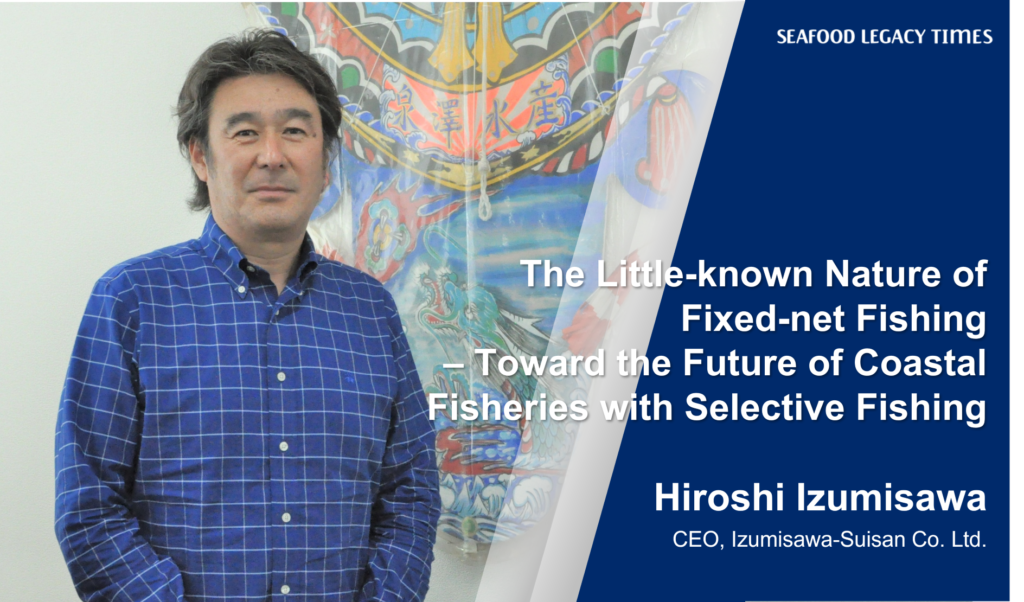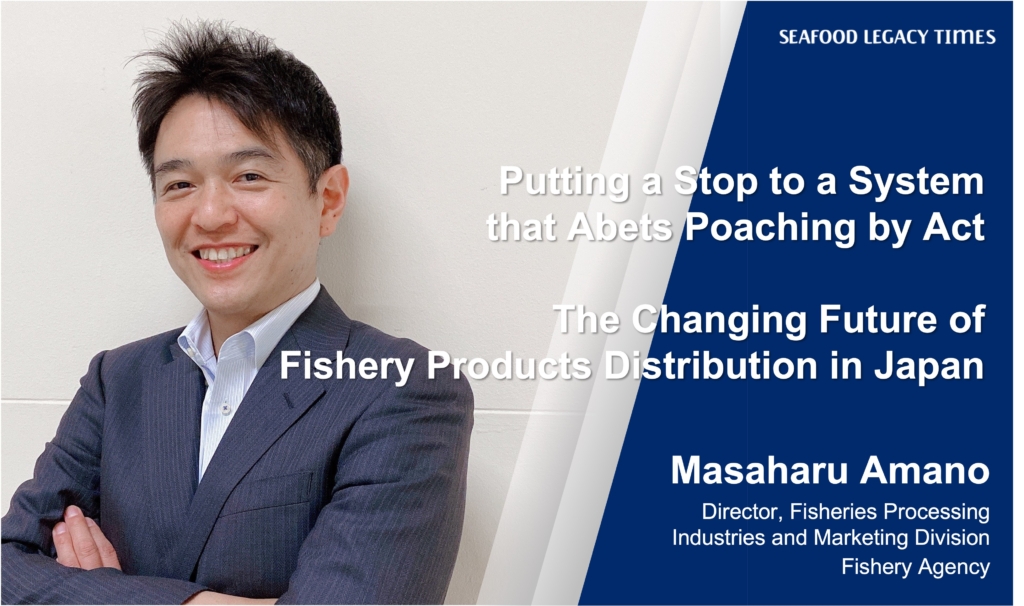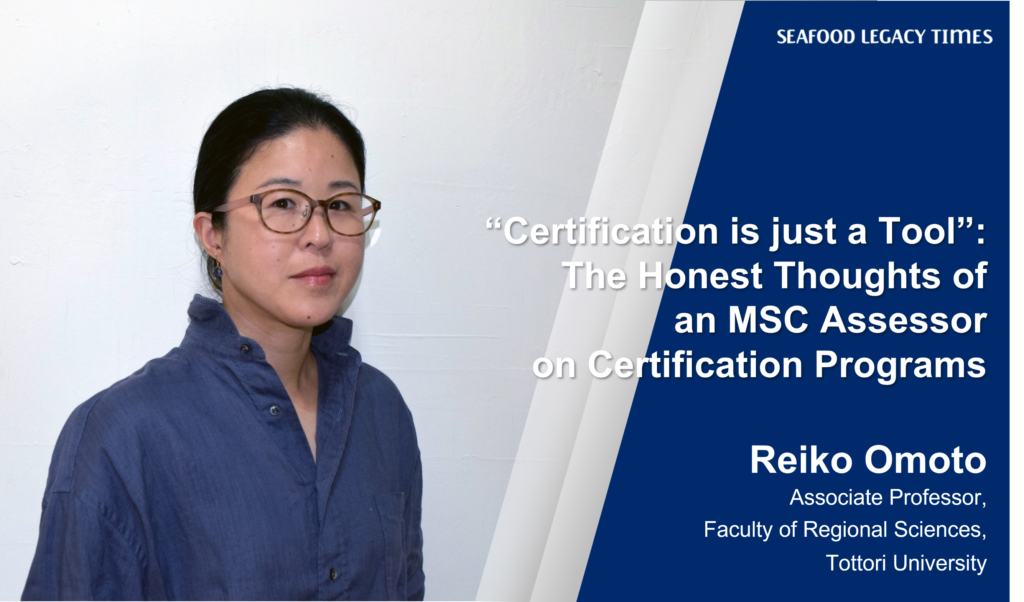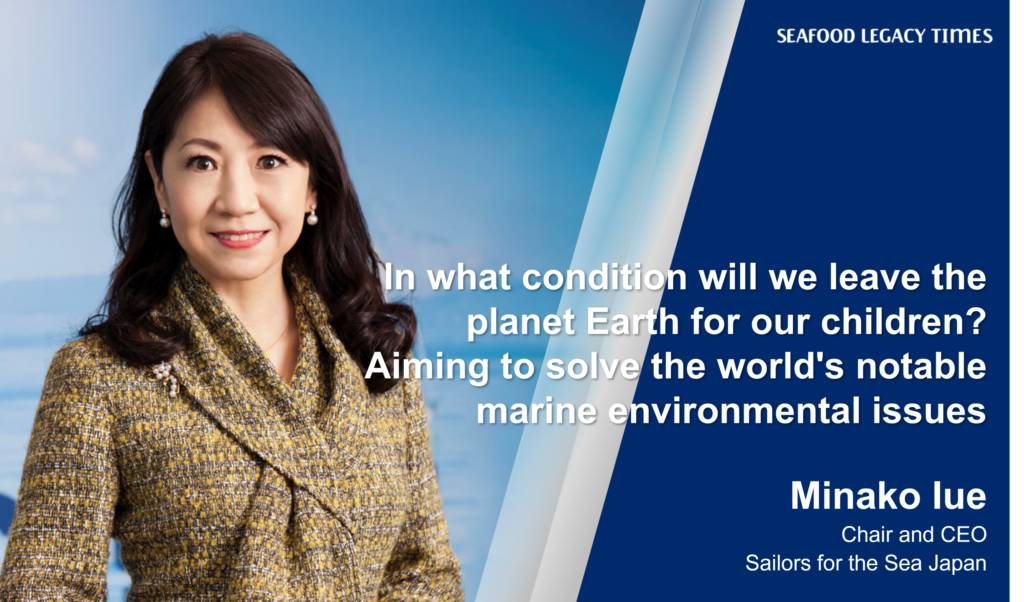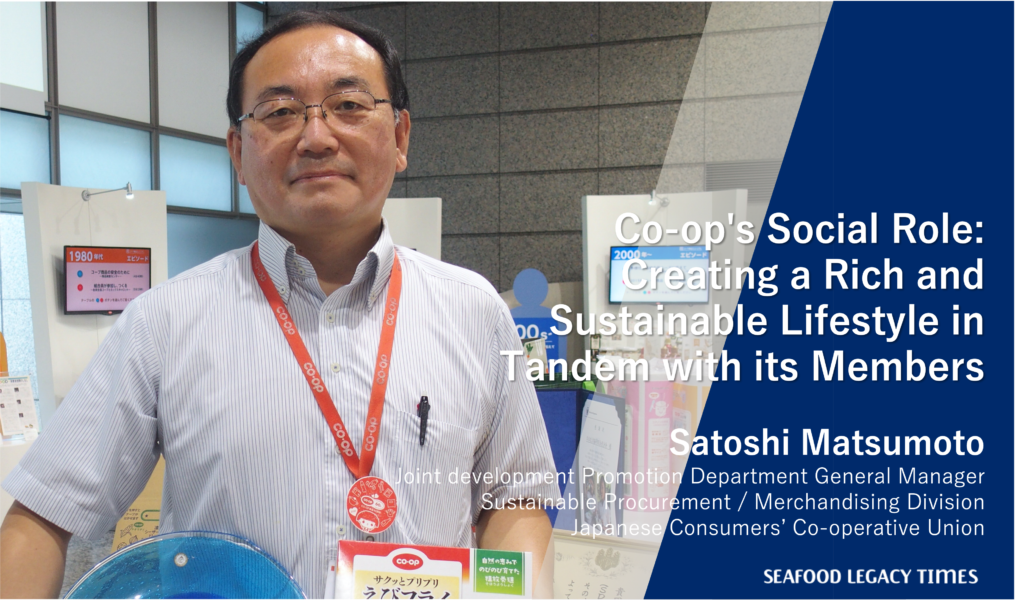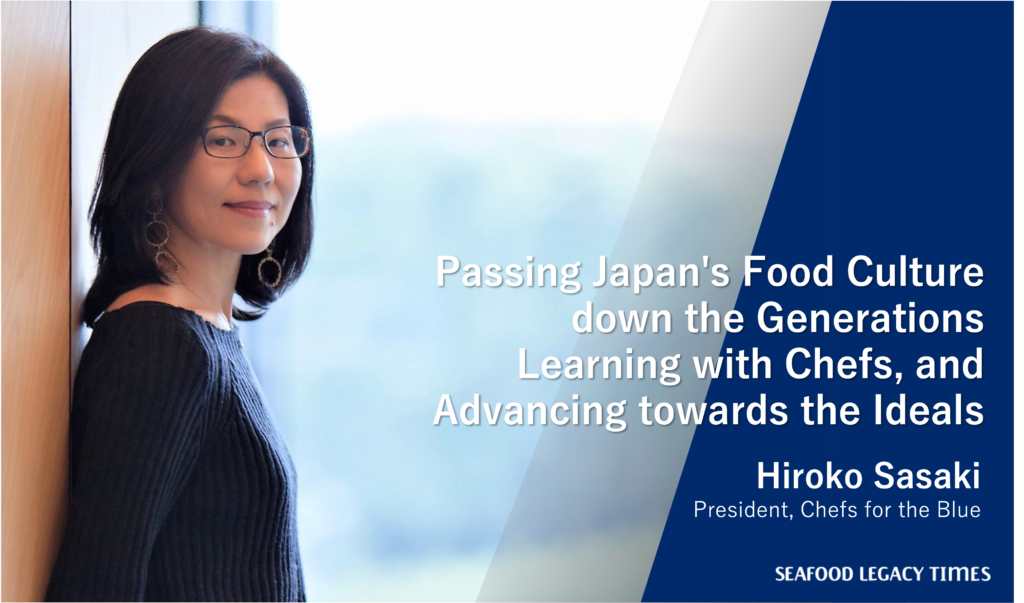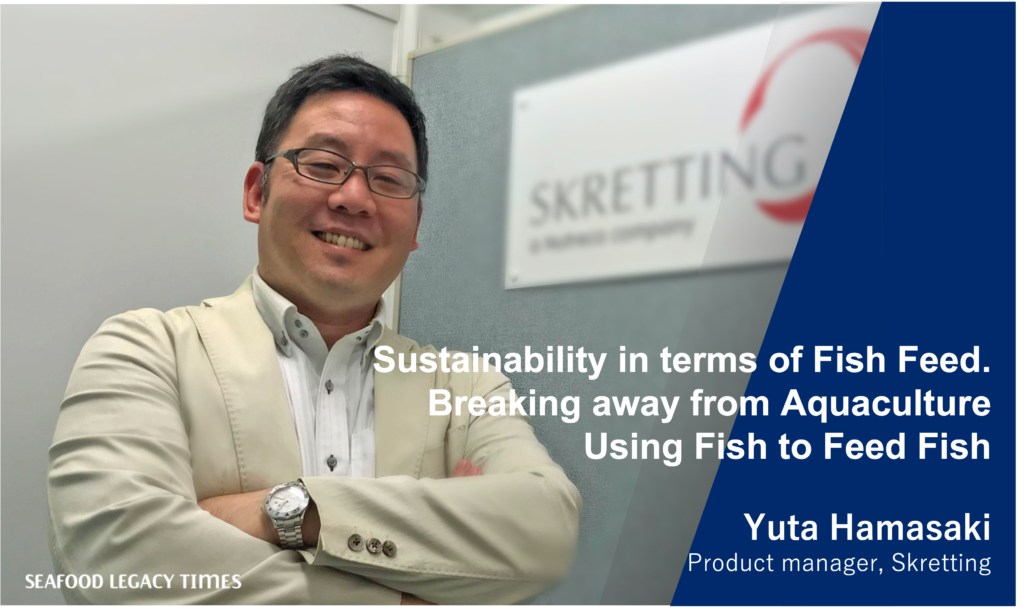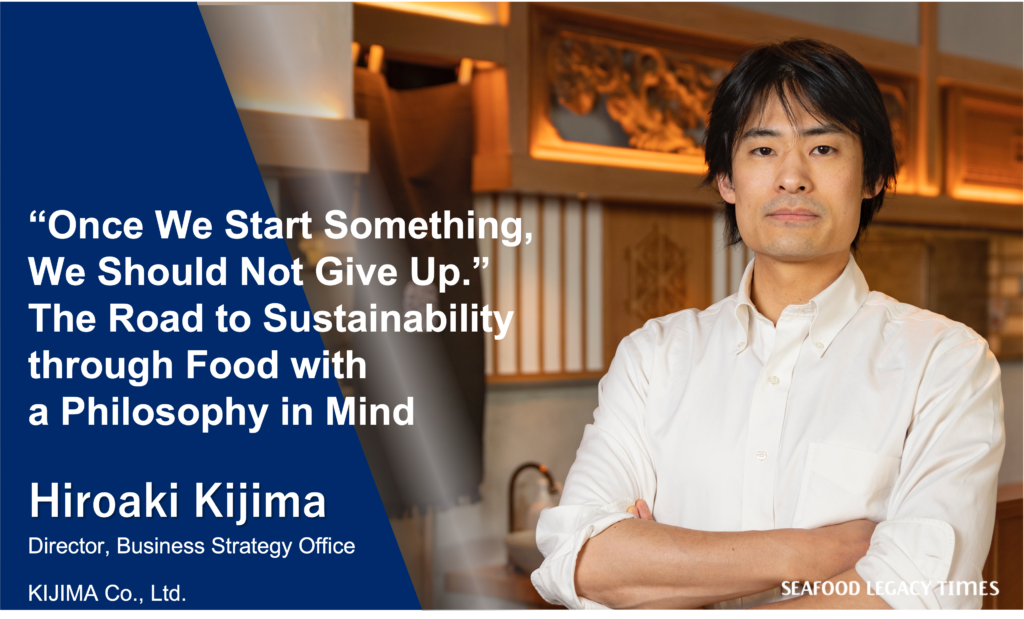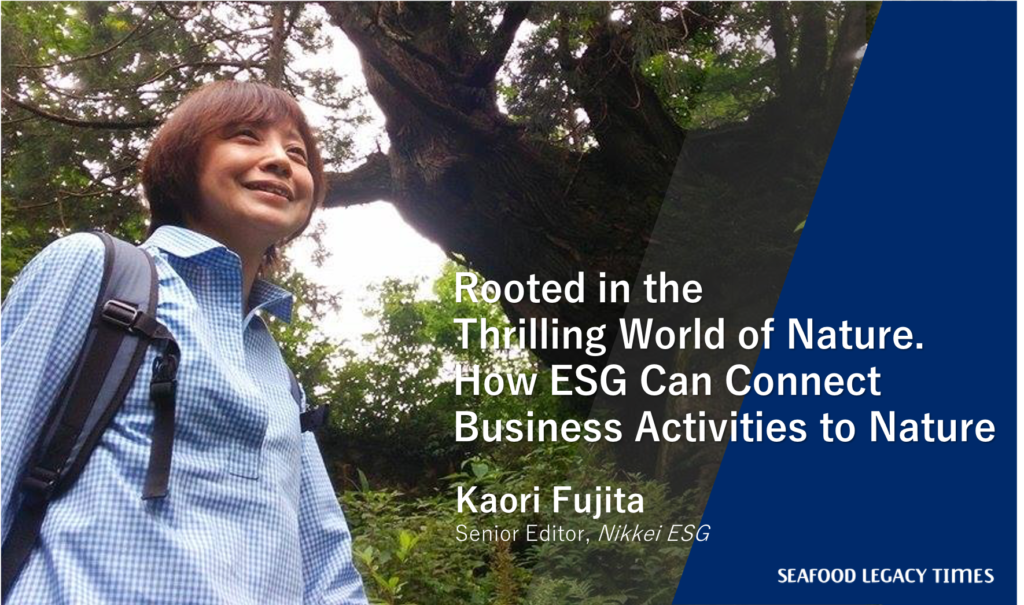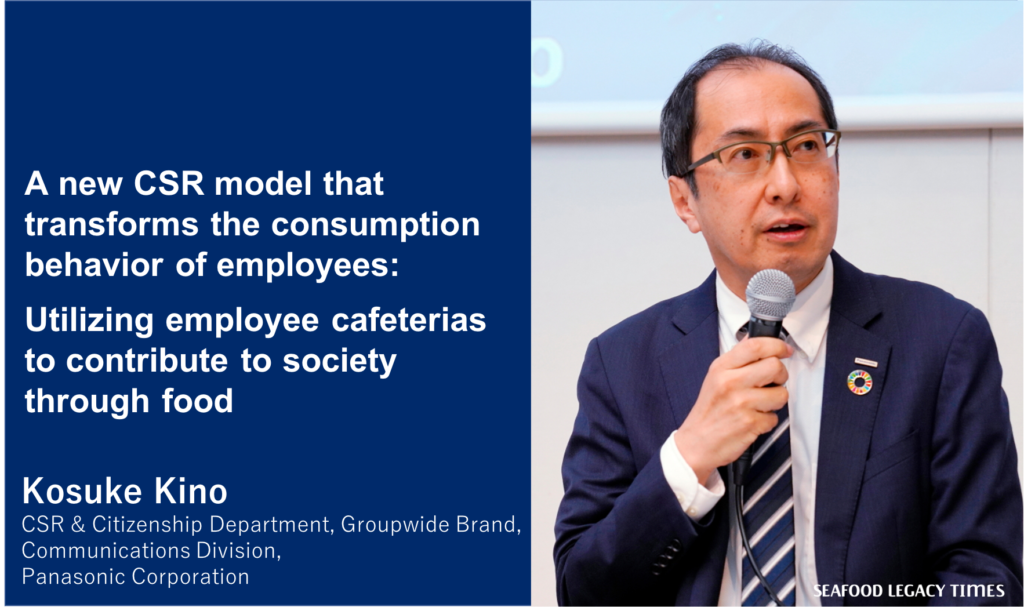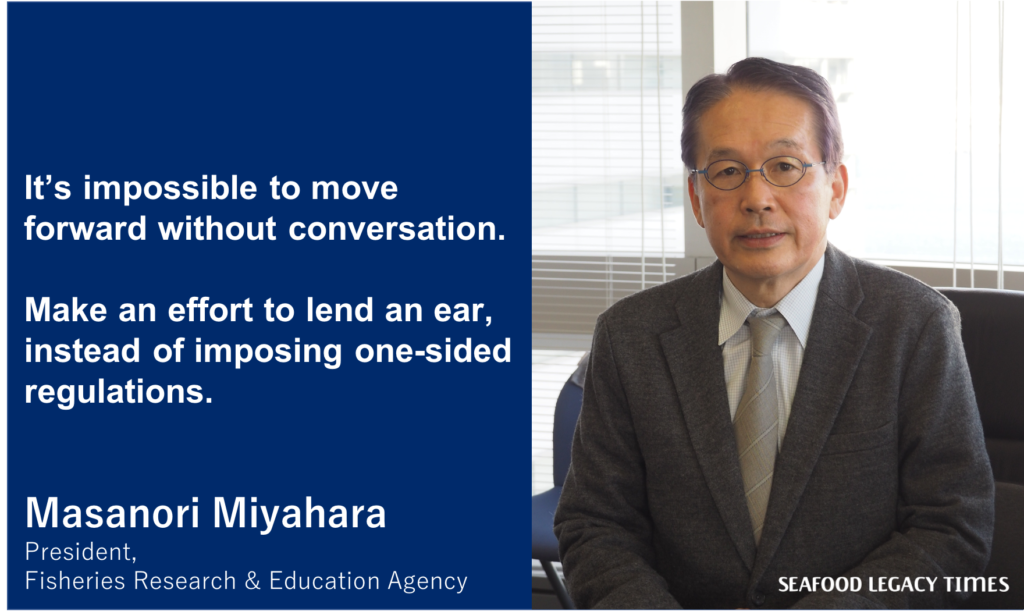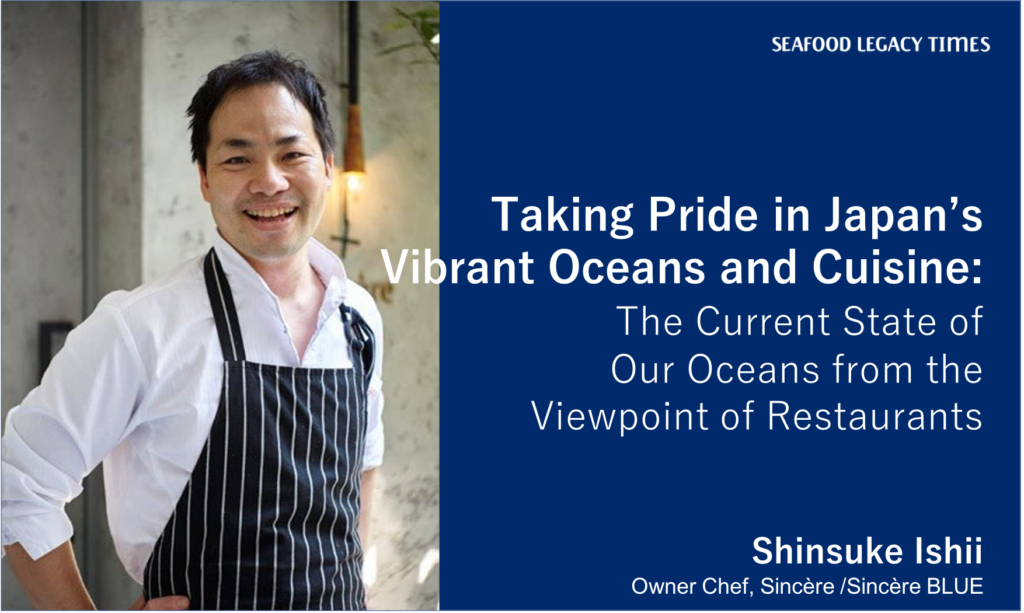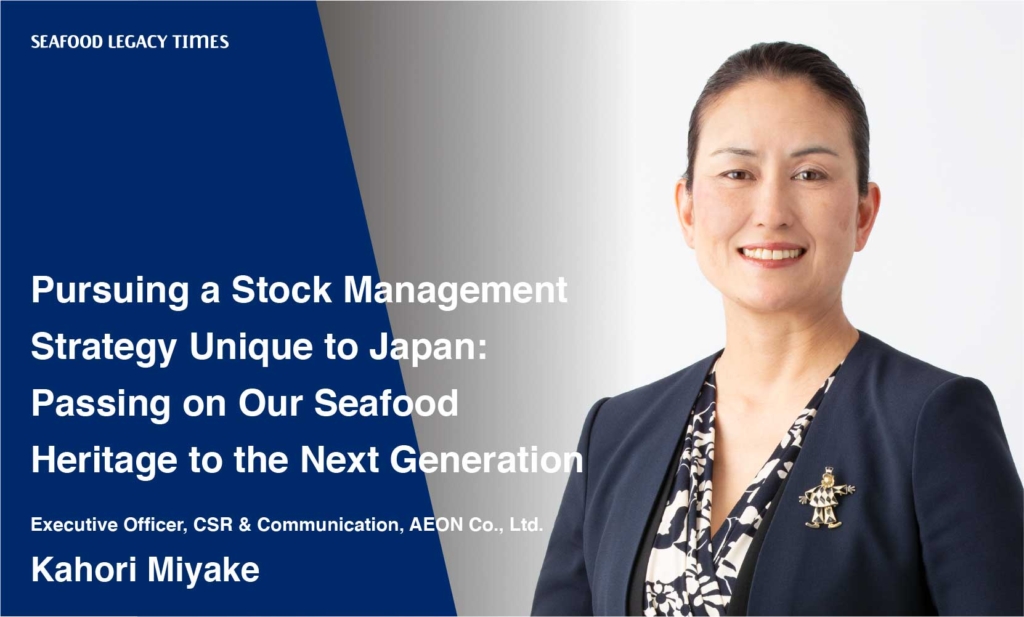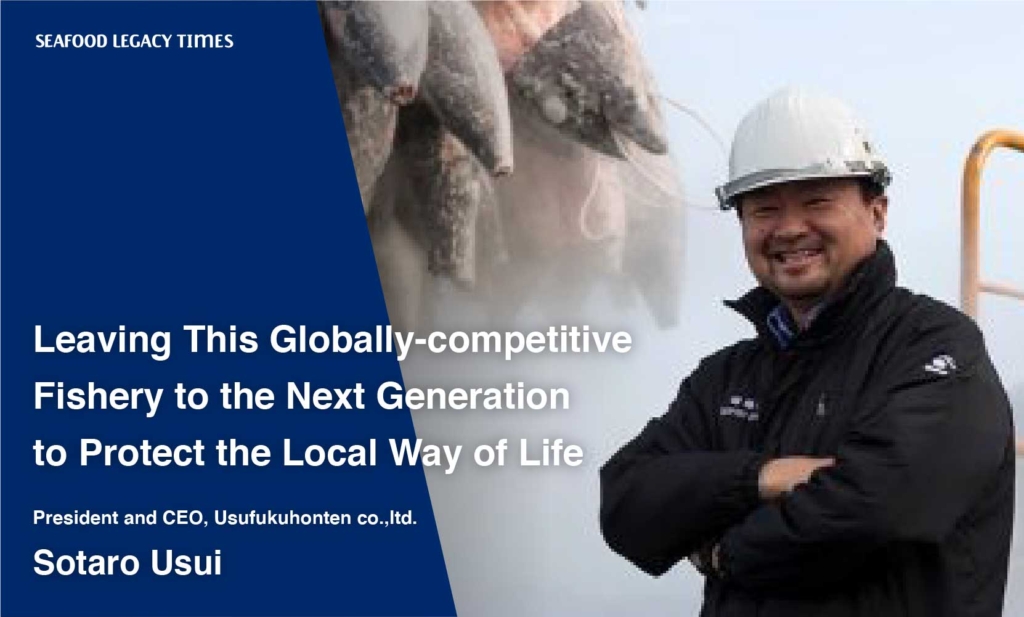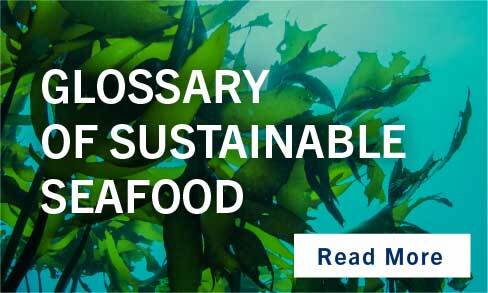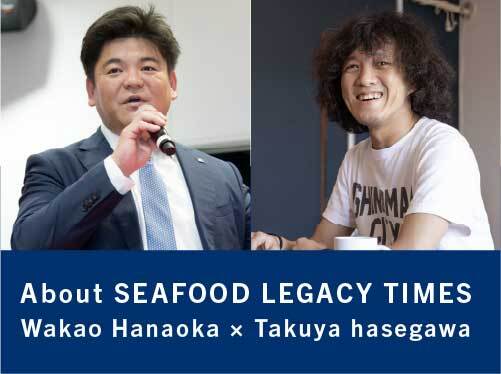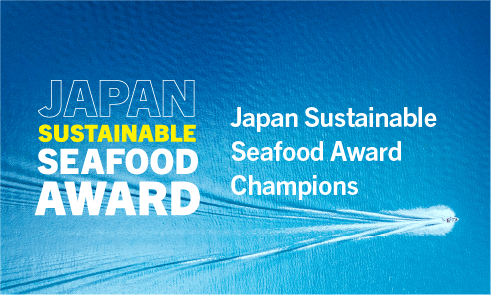

In March 2023, the Ainan Fisheries Cooperative (Representing Chairman: Hiroki Tachibana), Yasutaka Suisan, and Hamasui Co. Ltd. received the world’s first BAP certification for red sea bream. This was the first BAP certification for Japanese aquaculture, the background of which SEAFOOD LEGACY TIMES has featured in the past.
For this issue, we interviewed Kota Shibai, who is working to raise awareness of BAP certification as the Japanese market coordinator for the Global Seafood Alliance which manages the certification. In part one, we talked about what BAP certification is, the benefits that certification has for Japanese aquaculture producers, and more.
Kota Shibai
Market Development Coordinator Japan for the Global Seafood Alliance (GSA). Kota has served in this position since January 2021, where he is engaged in issues such as expanding the use of BAP/BSP-certified seafood in Japan, raising awareness of certified seafood, and the acquisition of certification in Japan, after being involved in work focused on the certification of sustainable seafood at a restaurant and a consulting company. He was born in Saitama Prefecture.
——First, please tell us about the GSA’s BAP certification.
BAP (Best Aquaculture Practices) certification is a program the GSA launched in 2002 that evaluates the entire production process for aquaculture products. Specifically, the certification program guarantees environmental responsibility, health and welfare of the farmed animals, food safety, and social accountability at hatcheries, feed mills, farms, and processing plants.
What BAP certification guarantees:
1. Environmental responsibility: Conservation of habitats, water quality, response to problems with drainage, etc.
2. Health and welfare of farmed animals: Response to problems with disease management, etc.
3. Food safety: No use of banned antibiotics or other chemical substances
4. Social responsibility: Operations and a work environment that thoroughly protect the safety and human rights of producers and employees
As of May 2023, 3,053 facilities around the world have received BAP certification, covering 30 species in 36 countries. A total of over 2.8 million tons of seafood has been certified across the world, which is about 3.1 times as much as Japan’s marine aquaculture production in 2020 (roughly 970,000 tons).
——What benefits does BAP certification have for Japan’s fisheries?
BAP certification can be obtained after a single inspection using international standards at each hatchery, feed mill, farm, and processing plant in the aquaculture supply chain. This audit is performed by an independent third-party organization, which means it has more objectivity and credibility than a self-inspection or second-party audit. In particular, more and more companies in North America are looking to deal with more BAP-certified products, so certification will be advantageous when looking to deal with such companies.

BAP audit starts at food processing plants, then flows upstream along the supply chain. There are standards for each step along the farming process, and the auditor will visit and assess each facility. Facilities that become certified will receive between one and four stars, with four being the highest evaluation. Receiving four stars means that all points in the aquaculture supply chain meet the standards for certification, giving recipients more trust in the market.
There are economic benefits to dealing with BAP-certified seafood. Certification is unnecessary for processing or cooking in end-user environments like kitchens in supermarkets, restaurants, or hotels, so if they use logos along with guidelines, they can continue to use it with no additional cost. In fact, there are no fees at all associated with using the logo.
Outside of the above instances, any facility that opens and processes the products in a way that changes their form is subject to the processing plant standards and is required to get certification.
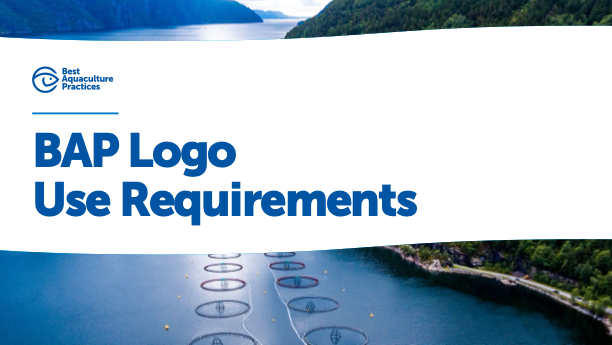
——As the Japanese coordinator for the GSA, what sort of things are you doing to expand the BAP certification?
Before becoming a full-time GSA staff member in January 2021, I had been supporting BAP certification activities in Japan through domestic companies since the latter half of 2018. I carried out awareness-raising activities to increase the number of retailers who sold products with BAP certification logos and supported efforts to increase recognition over the internet.
Since becoming a full-time staff member, I’ve been visiting retailers to get them to deal with BAP-certified seafood as well as visiting suppliers directly to encourage them to promote products they already deal with to retailers by placing the BAP certification logo on the packages. Awareness is currently spreading little by little, and I’ve been getting more inquiries about obtaining and utilizing BAP certification.
GSA has staff in 18 countries that are divided up between “producing countries” and “market countries,” and Japan is regarded as the latter. Japan is the third-largest seafood market in the world in terms of money spent, and if Japanese companies look for BAP certification in products, we believe that will lead to the maintenance of BAP certification for producers in like Southeast Asian shrimp and North American salmon and mussels as well as a motivation for newly acquiring the certifications.
——How do you collaborate with GSA headquarters and branches overseas? GSA has an office in China as well, so what sort of movement are you seeing in neighboring Asian countries?
GSA has weekly meetings with offices in each country and we share information. The Japanese office has strong collaboration with the Chinese office. Currently in China, young people in urban areas have strong interest in the safety and sustainability of seafood, and we have survey results that show awareness of BAP certification is on the rise. The survey showed that out of 3,400 respondents, 30% knew about BAP certification. We’ve been putting effort for many years into BAP certification in Southeast Asian countries that export to North America, but we’re currently starting to move toward spreading it into market countries as well.
——I understand that over 150 end-users worldwide support BAP certification, but how many companies in Japan are doing so, and in what ways?
The firms that deal with BAP-certified seafood are all end users, and no contract or fee is necessary to become an end user. Currently, about 30 firms in Japan are active as end users. Each firm contributes in a different way, like hosting events following the guidelines, dealing with BAP-certified seafood, and more.
Across the world, 3,053 facilities dealing in 30 species in 36 countries have acquired the BAP certification. We learned that over 150 companies currently support the certification as end users, and awareness is spreading all across the world.
Original Japanese text: Shino Kawasaki




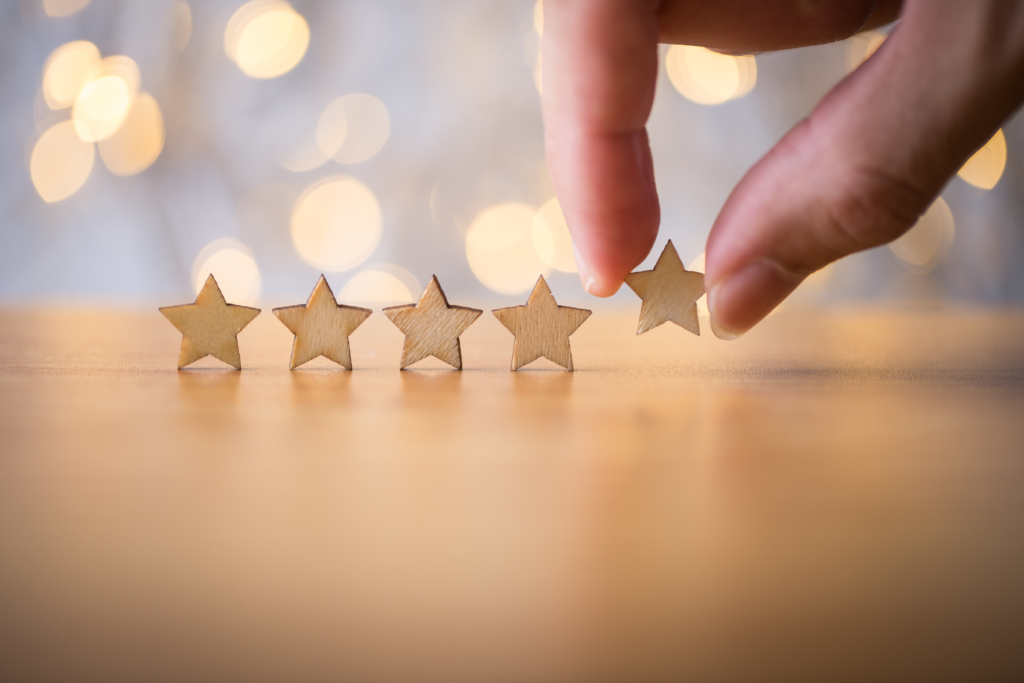




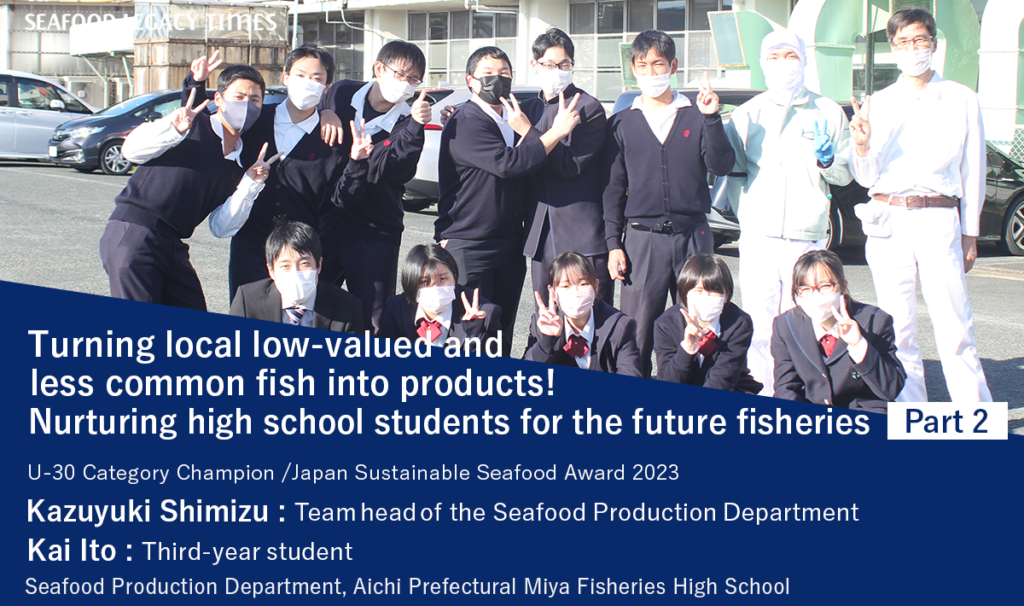
-1024x606.png)


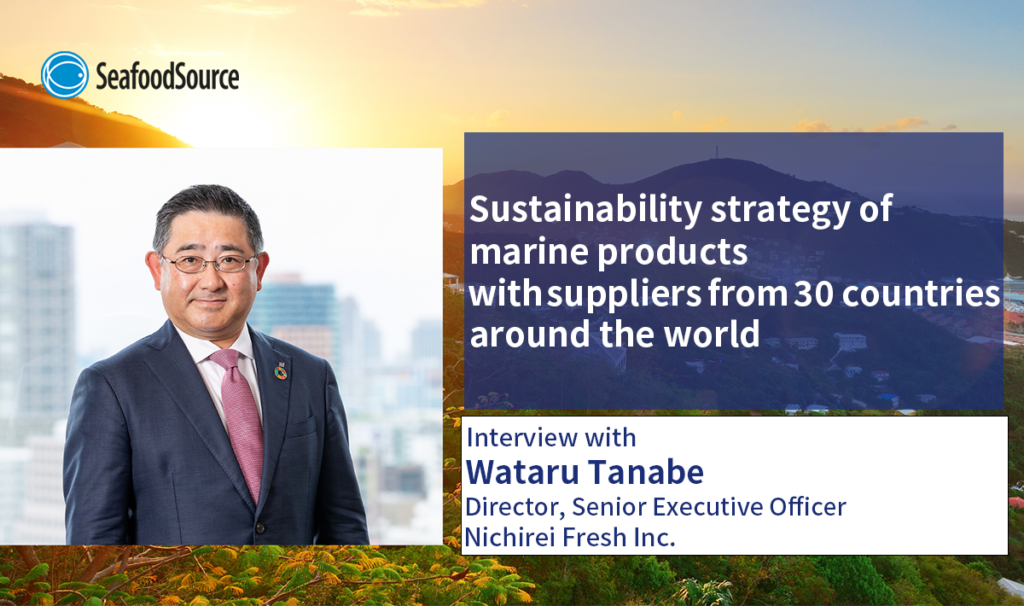
_-1024x606.png)

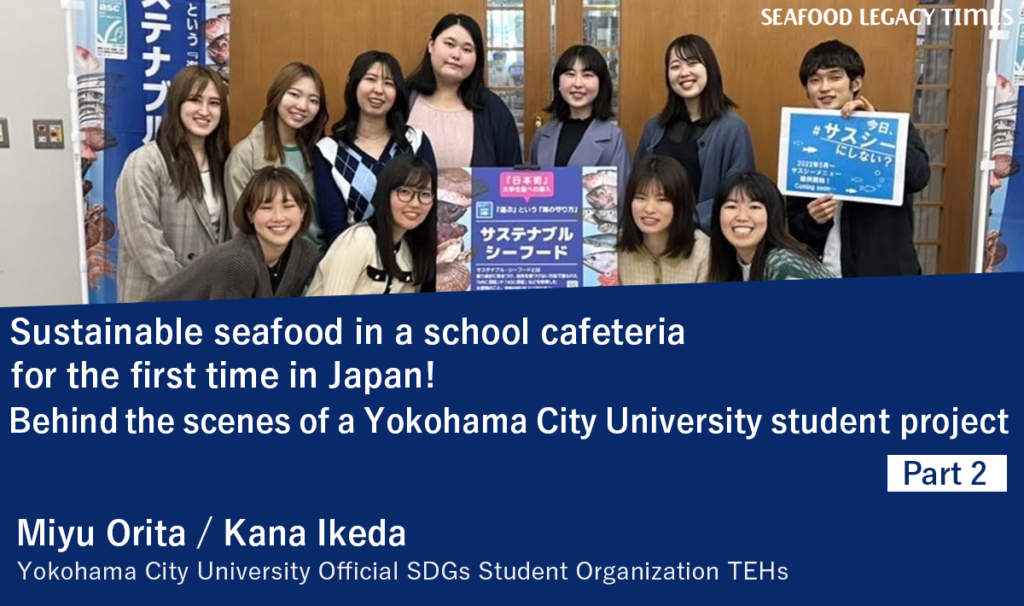
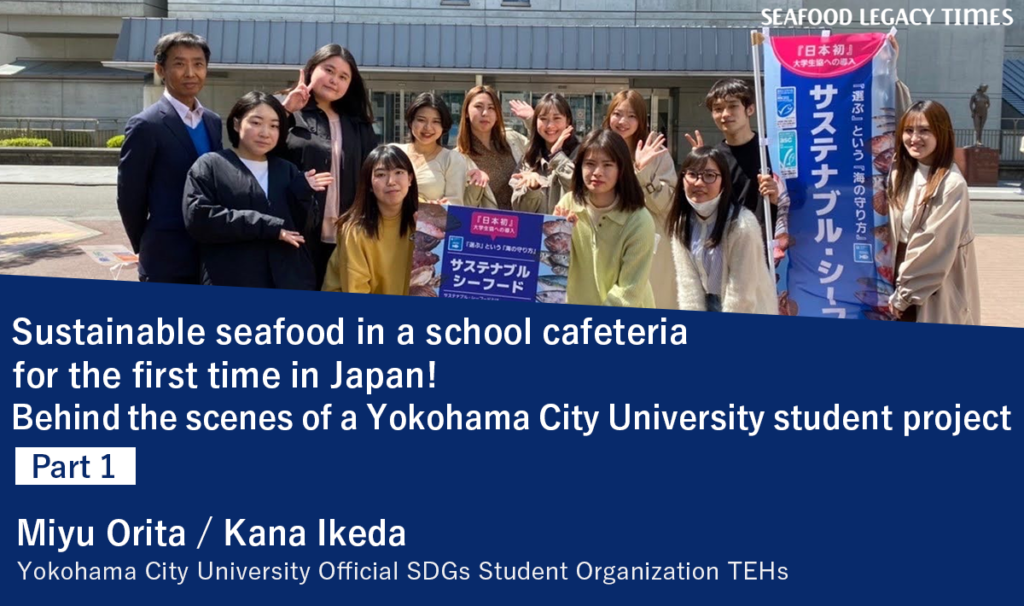



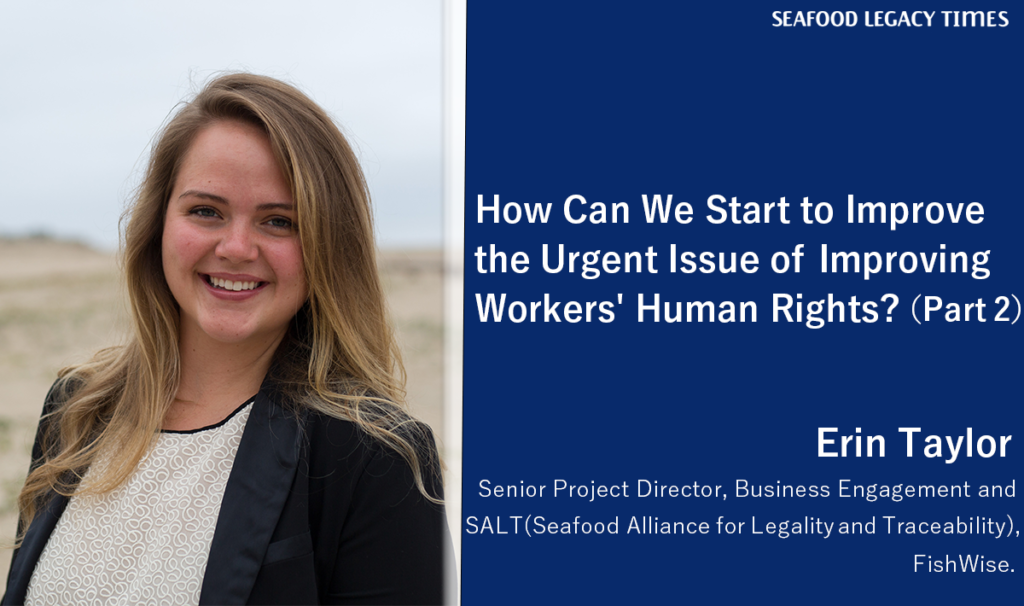
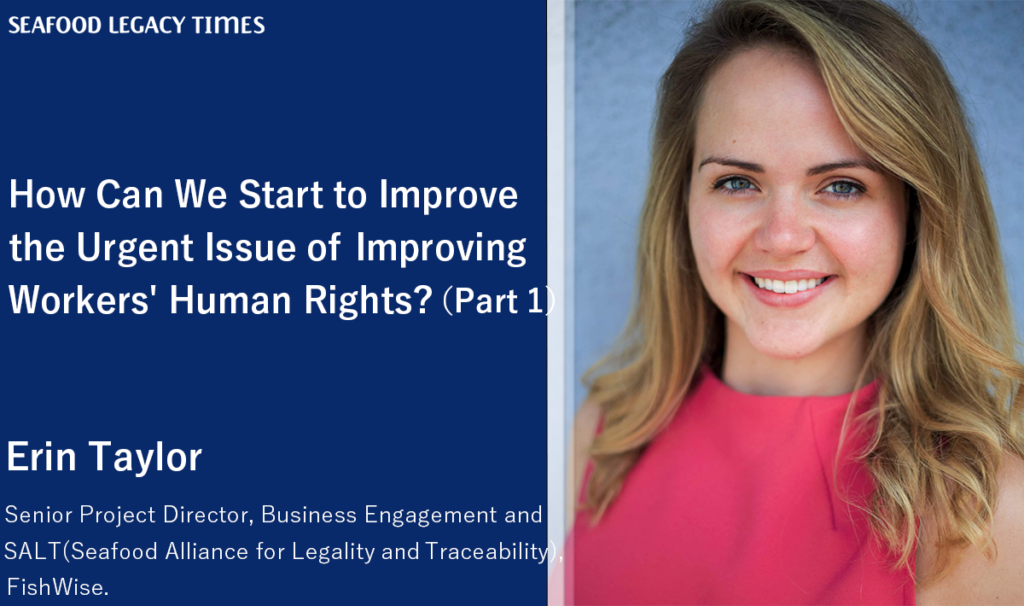
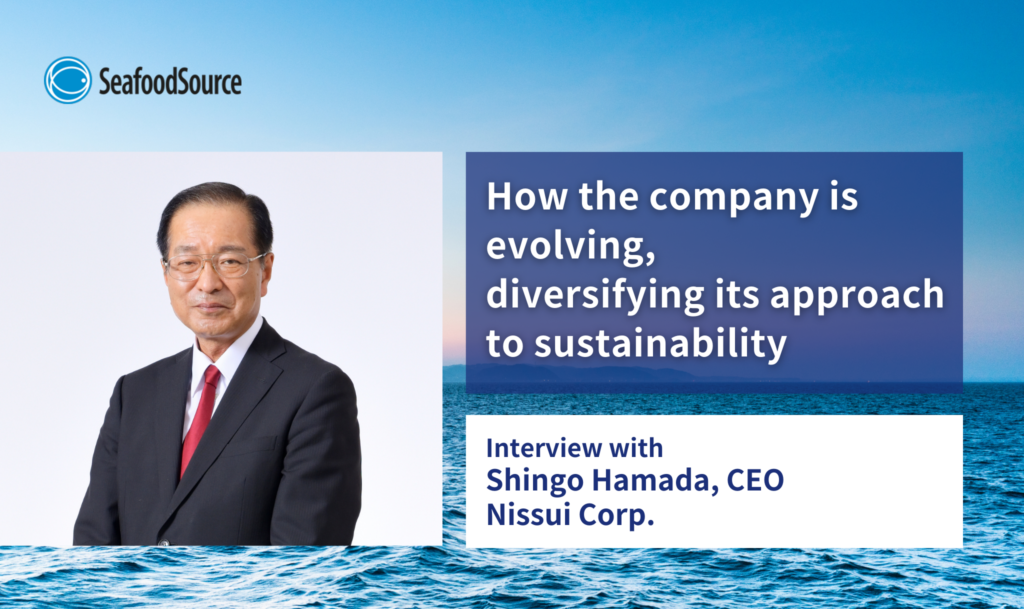




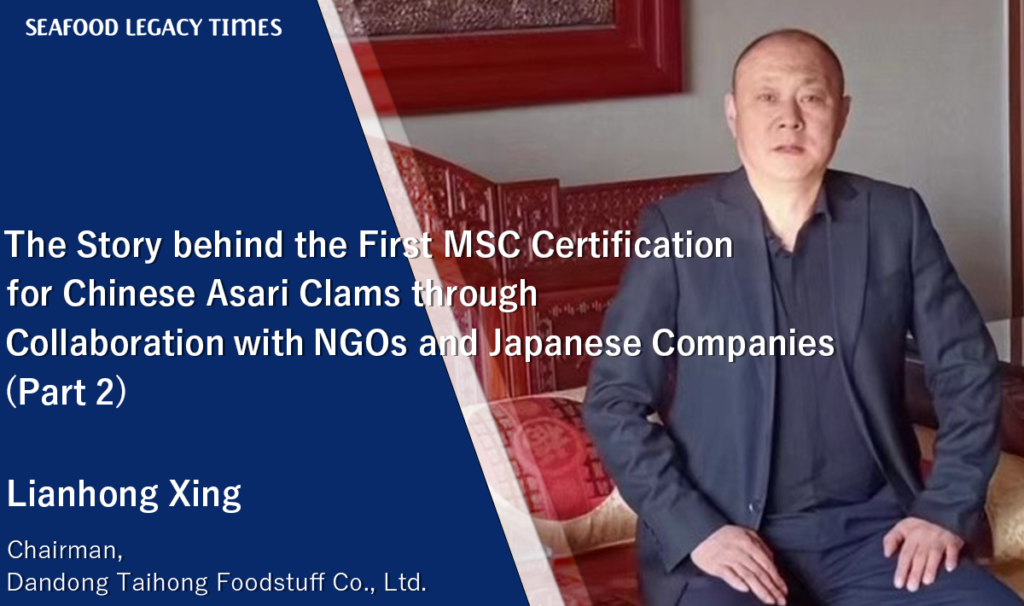
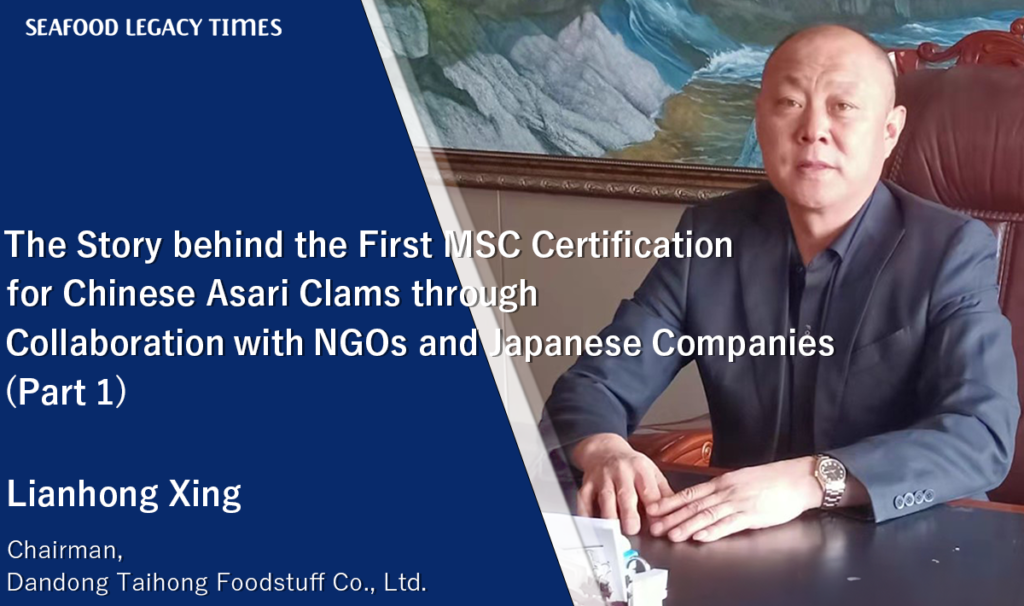

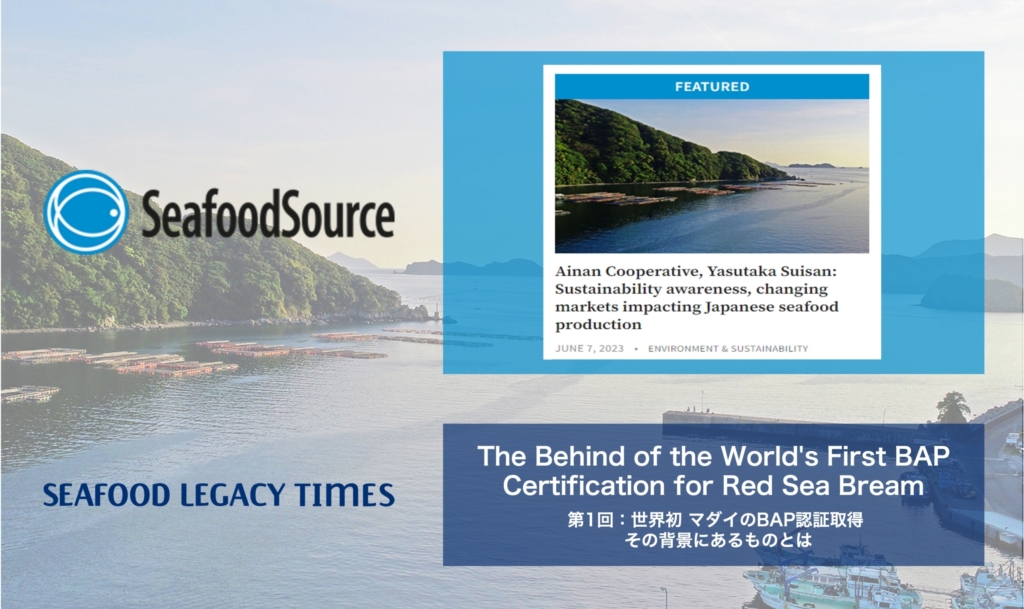

1_修正524-1024x606.png)


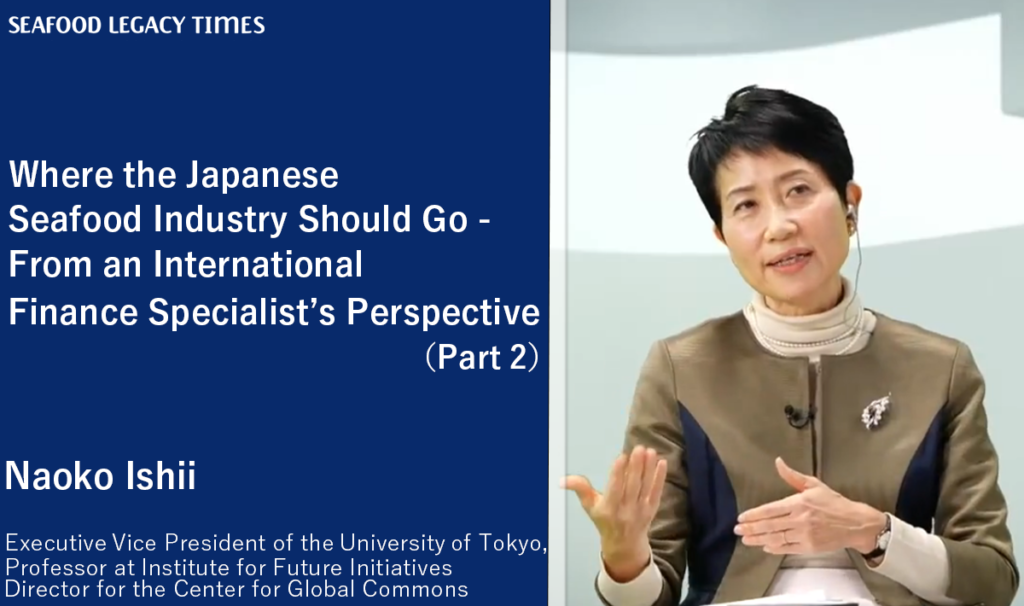







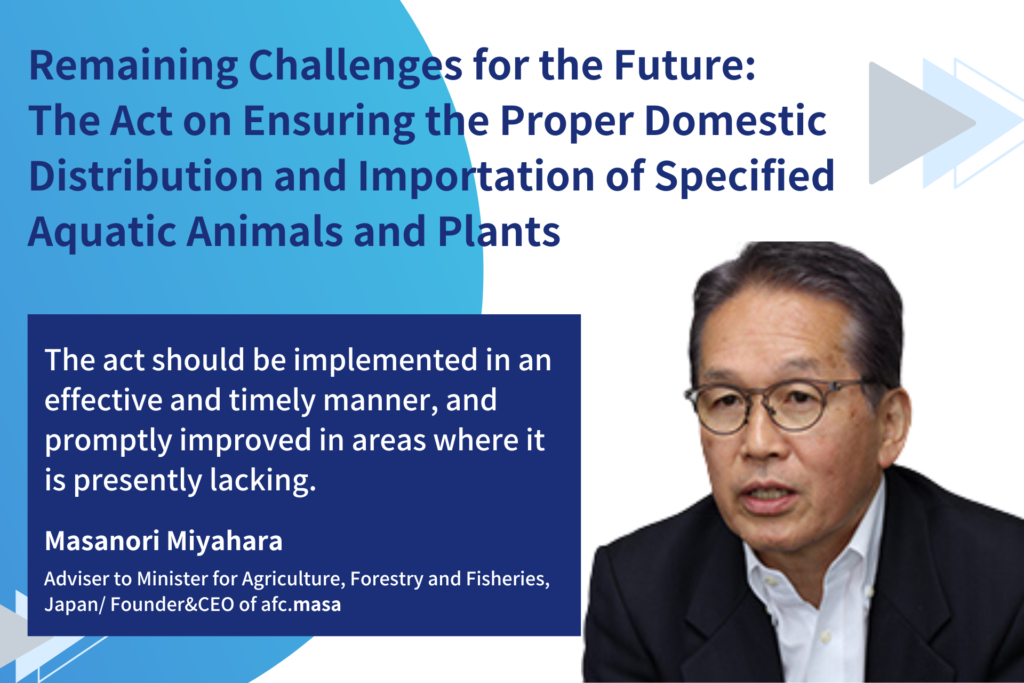
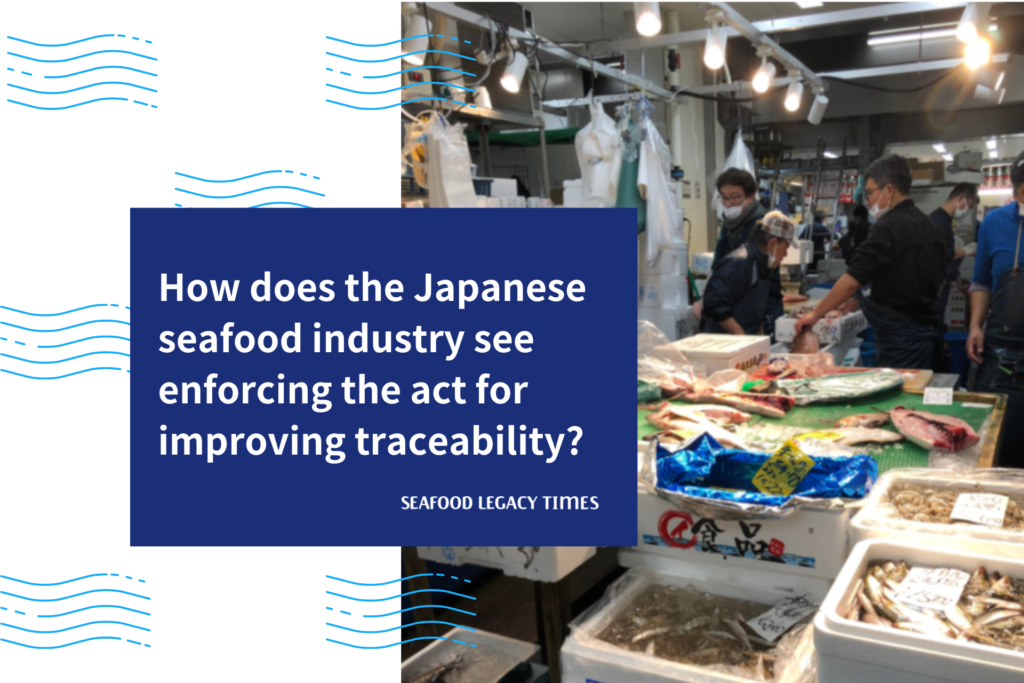



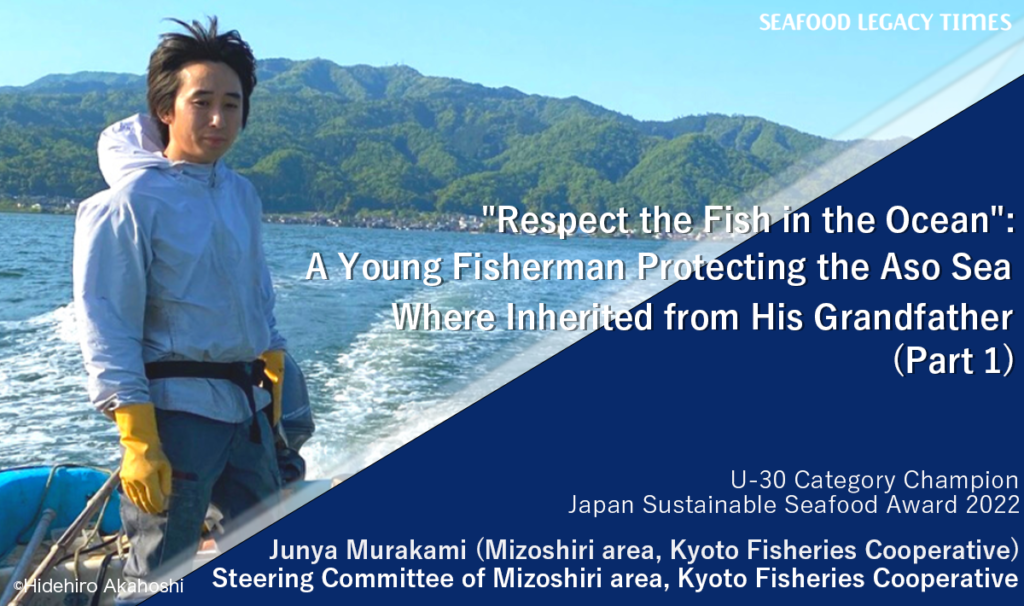
.2-1024x606.png)
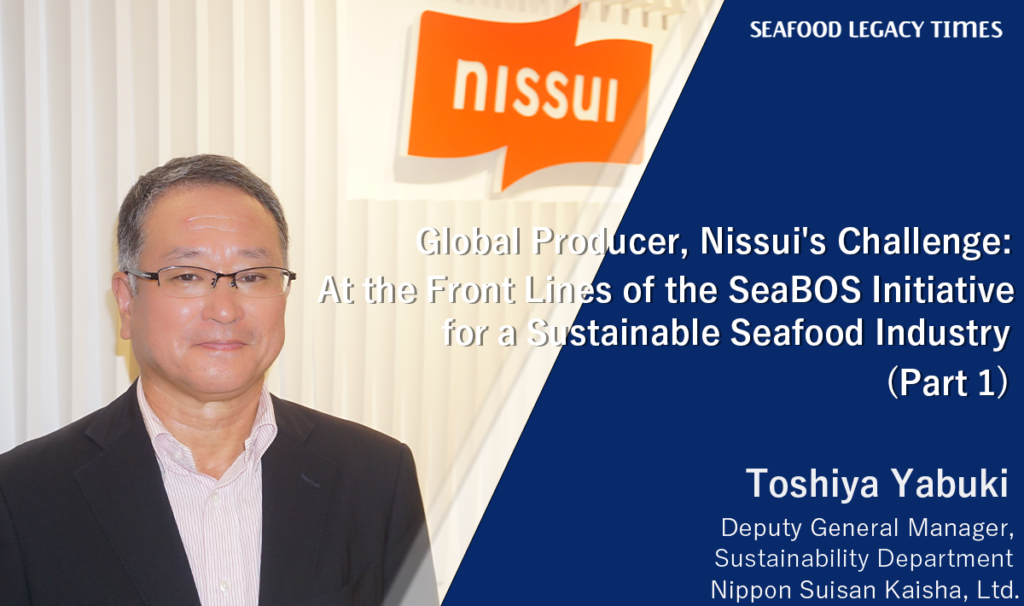
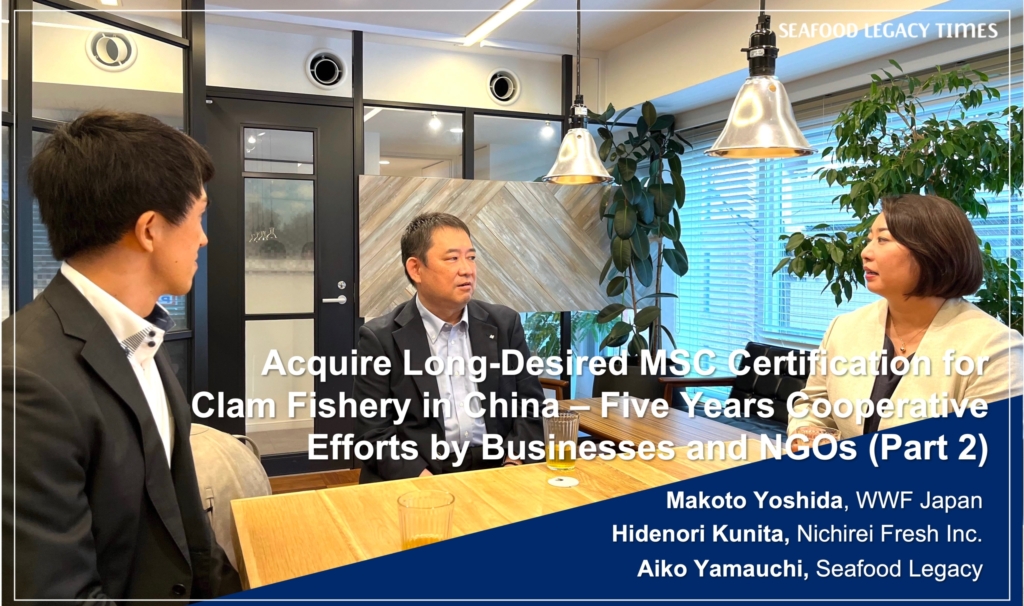
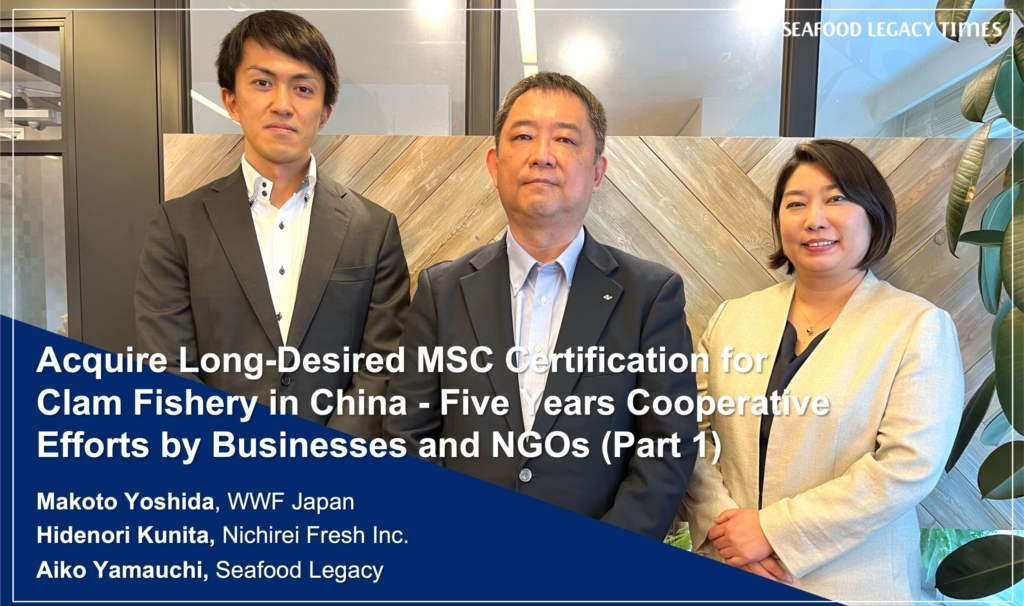






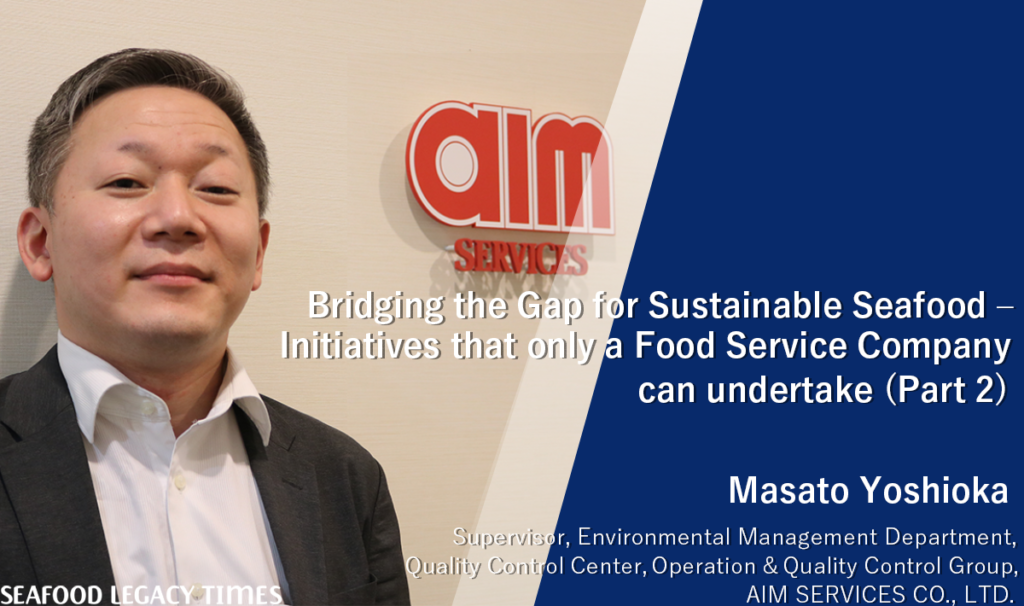
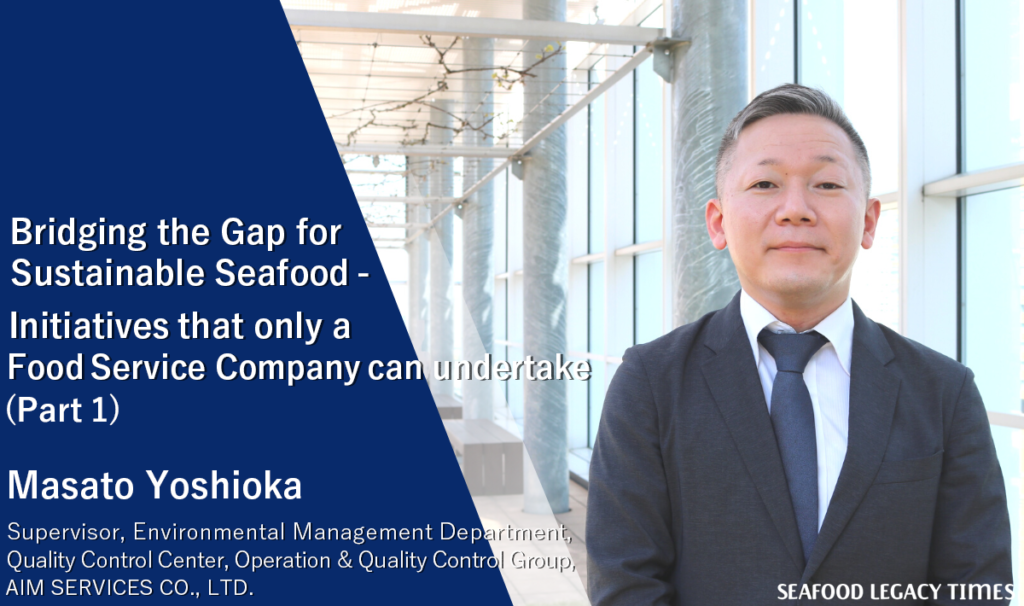
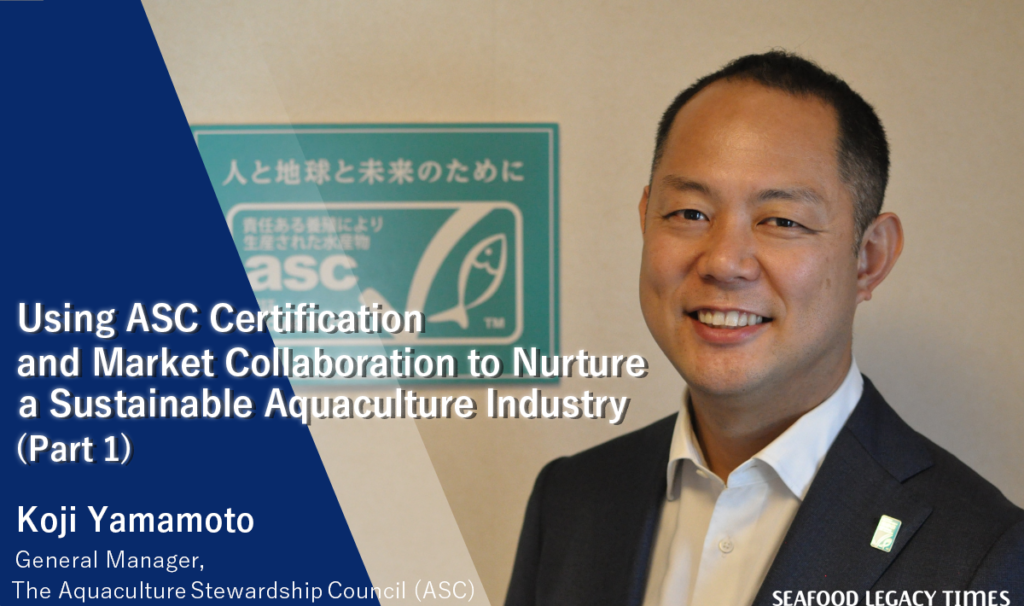
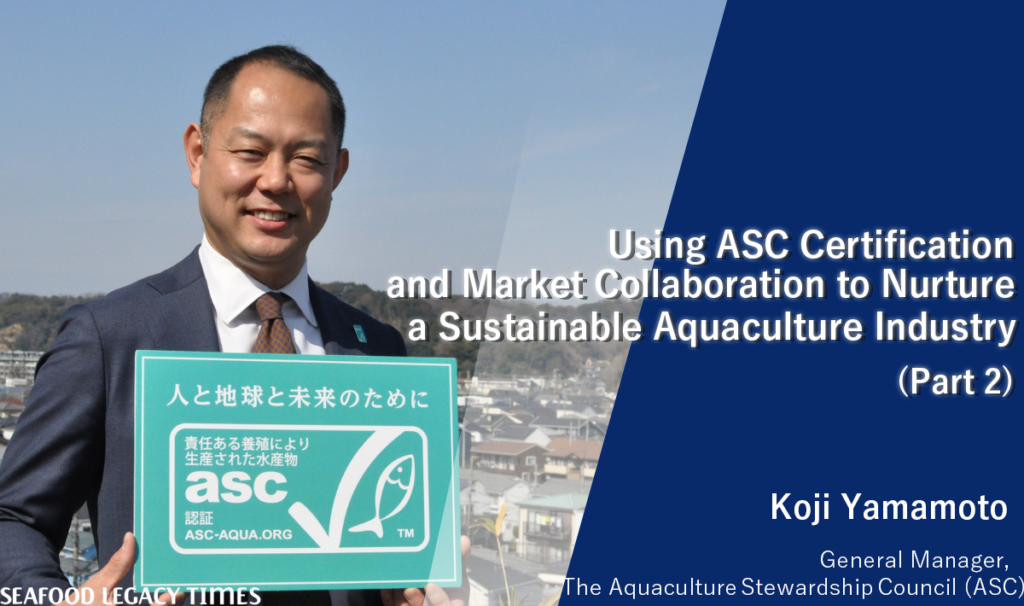
2-1024x606.png)
-1-1024x606.png)
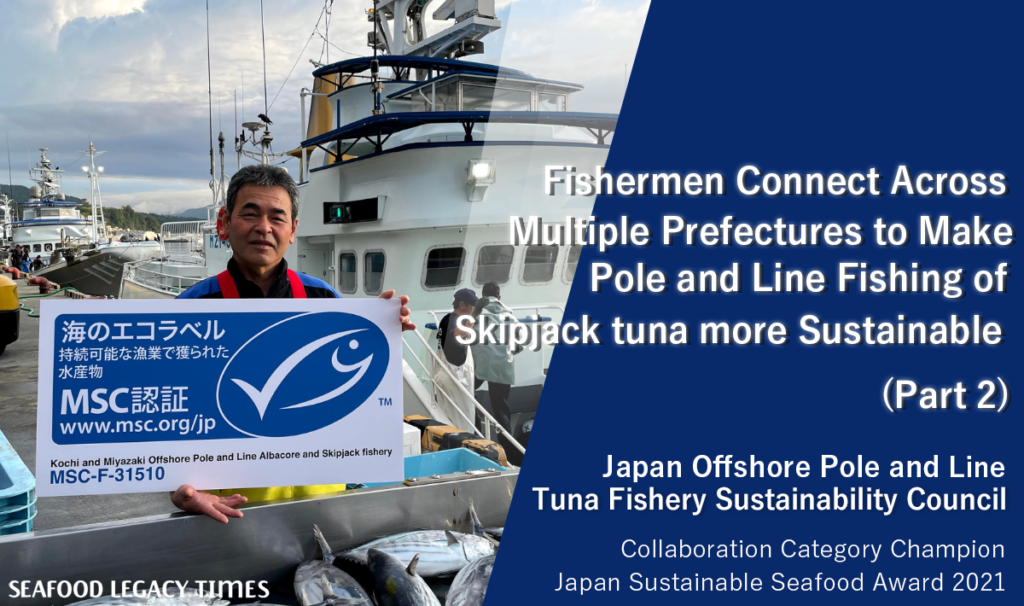
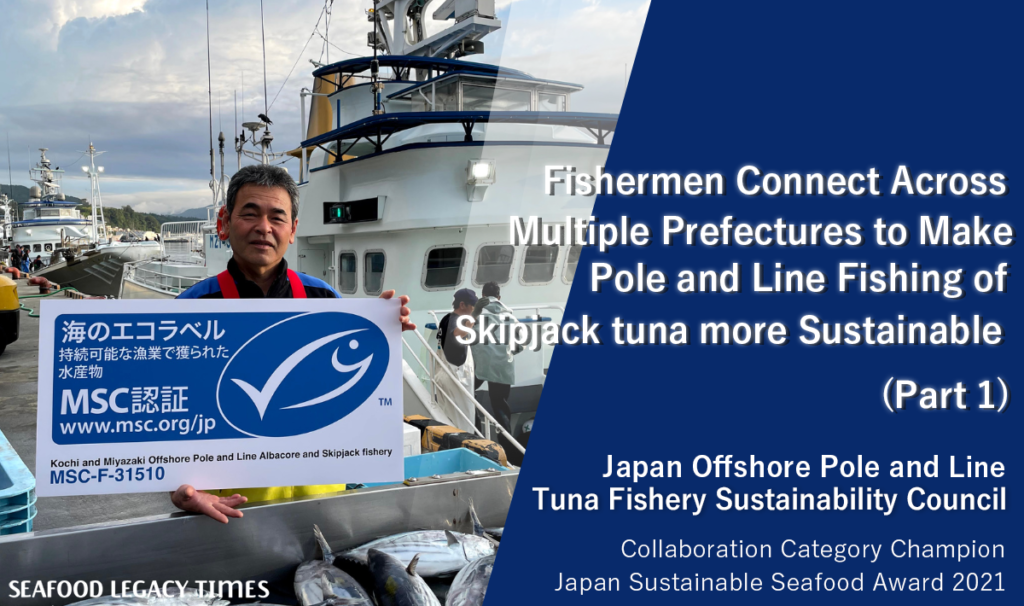
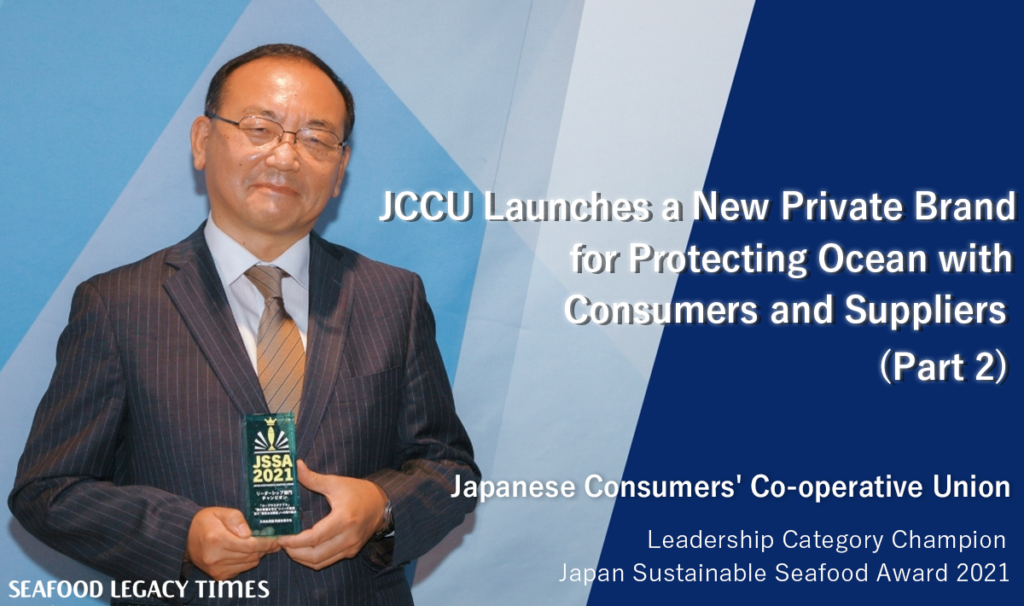
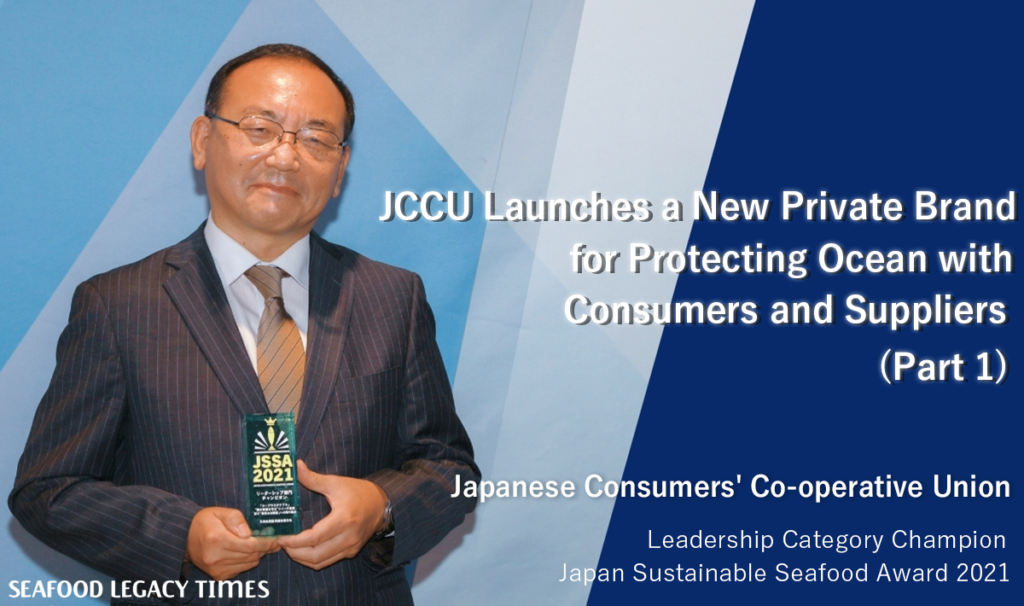
Part2-1024x606.png)
Part1-1024x606.png)
